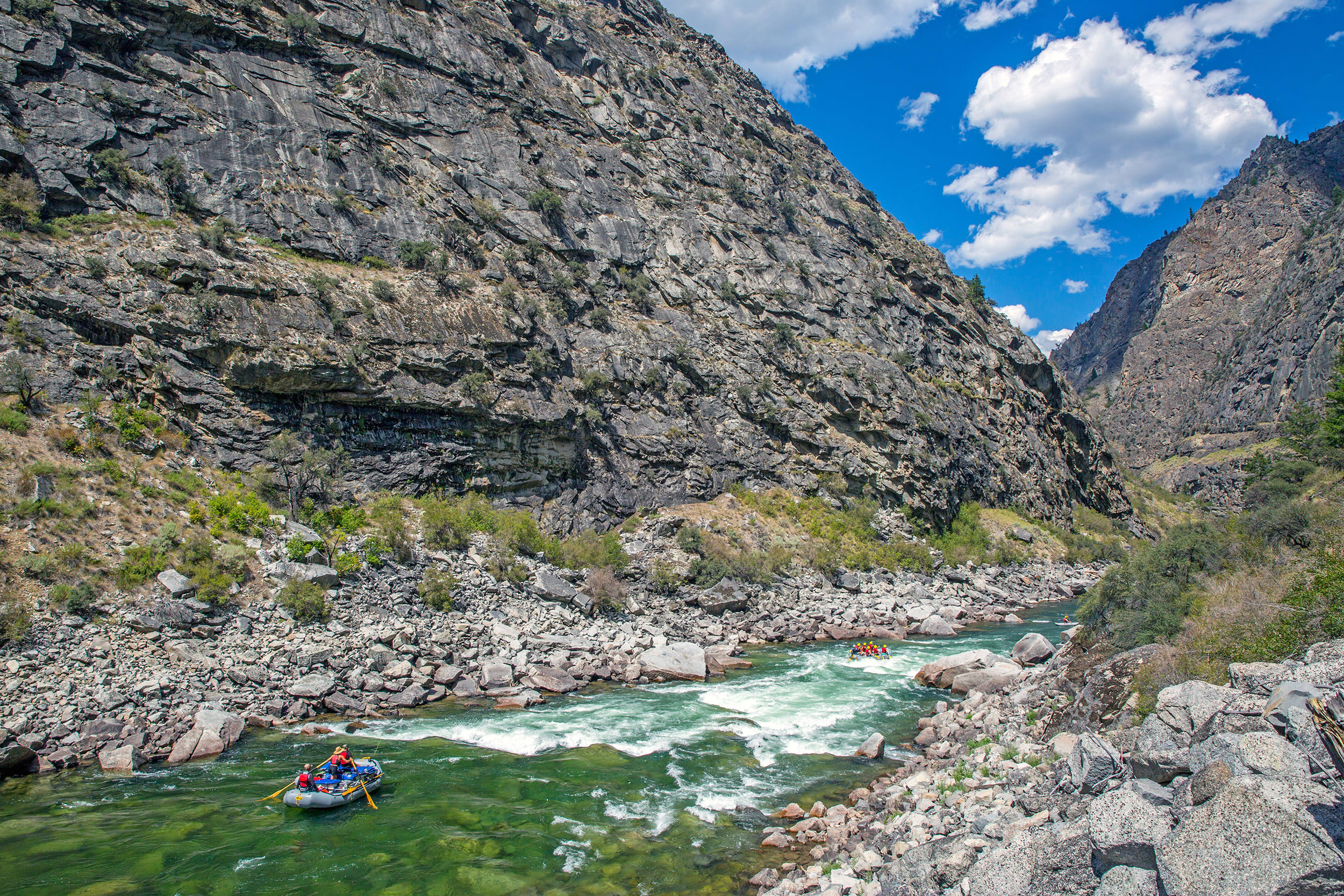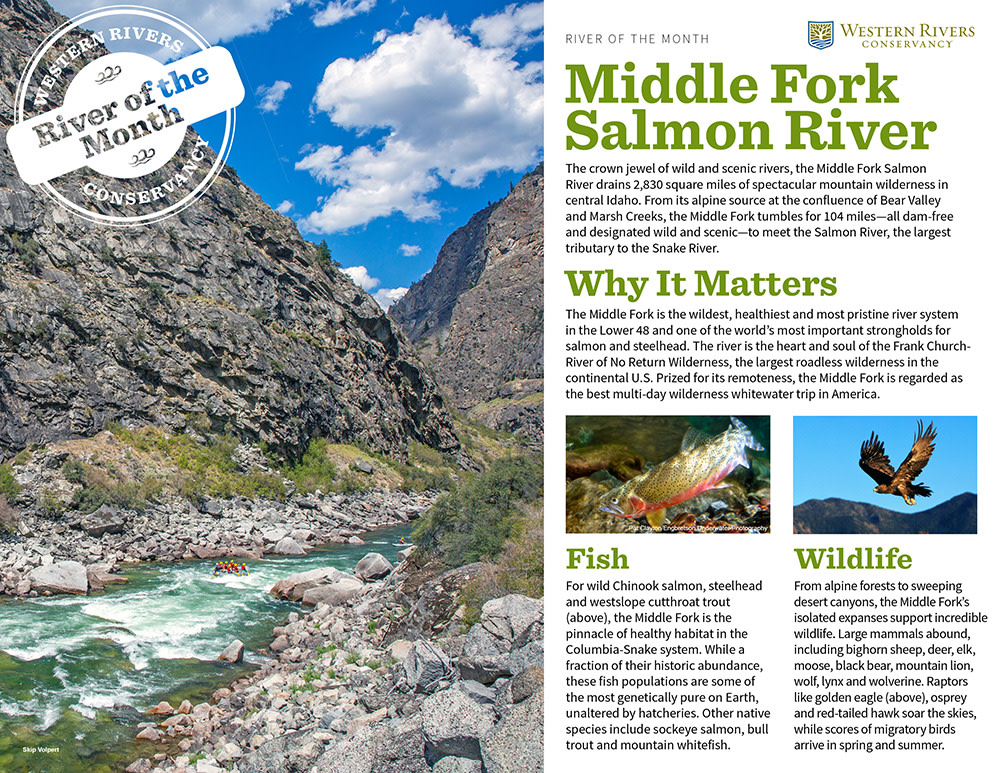
Fish
For wild Chinook salmon, steelhead and westslope cutthroat trout, the Middle Fork is the pinnacle of healthy habitat in the Columbia-Snake system. While a fraction of their historic abundance, these fish populations are some of the most genetically pure on Earth, unaltered by hatcheries. Other native species include sockeye salmon, bull trout and mountain whitefish.

Wildlife
From alpine forests to sweeping desert canyons, the Middle Fork’s isolated expanses support incredible wildlife. Large mammals abound, including bighorn sheep, deer, elk, moose, black bear, mountain lion, wolf, lynx and wolverine. Raptors like golden eagle, osprey and red-tailed hawk soar the skies, while scores of migratory birds arrive in spring and summer.

-
Paddle
The whitewater trip of a lifetime, the Class III-IV Middle Fork features 300 rapids on over 100 river miles and six-plus days of nonstop scenery. The early June put-in is Boundary Creek. By August, water levels drop and most boaters fly in to Indian Creek. The takeout is Cache Bar. Permits are issued through a lottery, and veteran guide services include Idaho River Journeys and Northwest Rafting.
-
Hike
The Middle Fork River Trail follows the river for 78 miles—most of its length. Start from the Middle Fork Transfer Camp and Trailhead for a week of hiking past grand vistas, relaxing hot springs and ancient petroglyphs. At Impassible Canyon (RM 78), the trail ends, and hikers can fly out of Flying B Ranch, hike out a side trail or arrange to complete the trip by boat.
-
Fish
Abundant and all-wild, the westslope cutthroat trout make the Middle Fork one of the best catch-and-release fisheries in the world. On good days you can hook dozens of these feisty, orange-red beauties, casting from a boat, hitting side creeks with great pocket water, or even from a rock at camp. Lower flows from July-September offer the best dry fly fishing. Check regulations.
The WRC Story
In 2019, Western Rivers Conservancy permanently conserved Cape Horn Ranch and returned desperately needed water to two critical headwater salmon streams at the source of the Middle Fork. We purchased the ranch in 2018 and conveyed it to the Salmon-Challis National Forest for protection in 2019. The ranch historically diverted up to 75 percent of the flows from Knapp Creek, which flows into Marsh Creek. Where Marsh Creek meets Bear Valley Creek, the Middle Fork is born. After conveying the land to the National Forest, we transferred the ranch’s water rights to the state of Idaho to keep these flows permanently instream for steelhead, Chinook and bull trout. Our efforts also conserved an outstanding series of alpine meadows and wetlands, where sandhill cranes nest every spring. What’s more, the project secured public access to the Cape Horn Guard Station, a backcountry outpost for cross-country skiers and firefighters.


Best Time of Year
- Fishing
- Jul-Sep
- Hiking
- May-Oct
- Whitewater
- Jun-Jul
Go Deeper
-
Middle Fork Hiking Guide
(Outdoor Project)
Learn More -
User’s Guide to the Frank Church-River of No Return Wilderness
(U.S. Forest Service)
Learn More -
Video: Home of the Tuka-Deka Sheep Eaters
(U.S. Forest Service)
Learn More -
Video: The Sweep
(OARS)
Learn More


